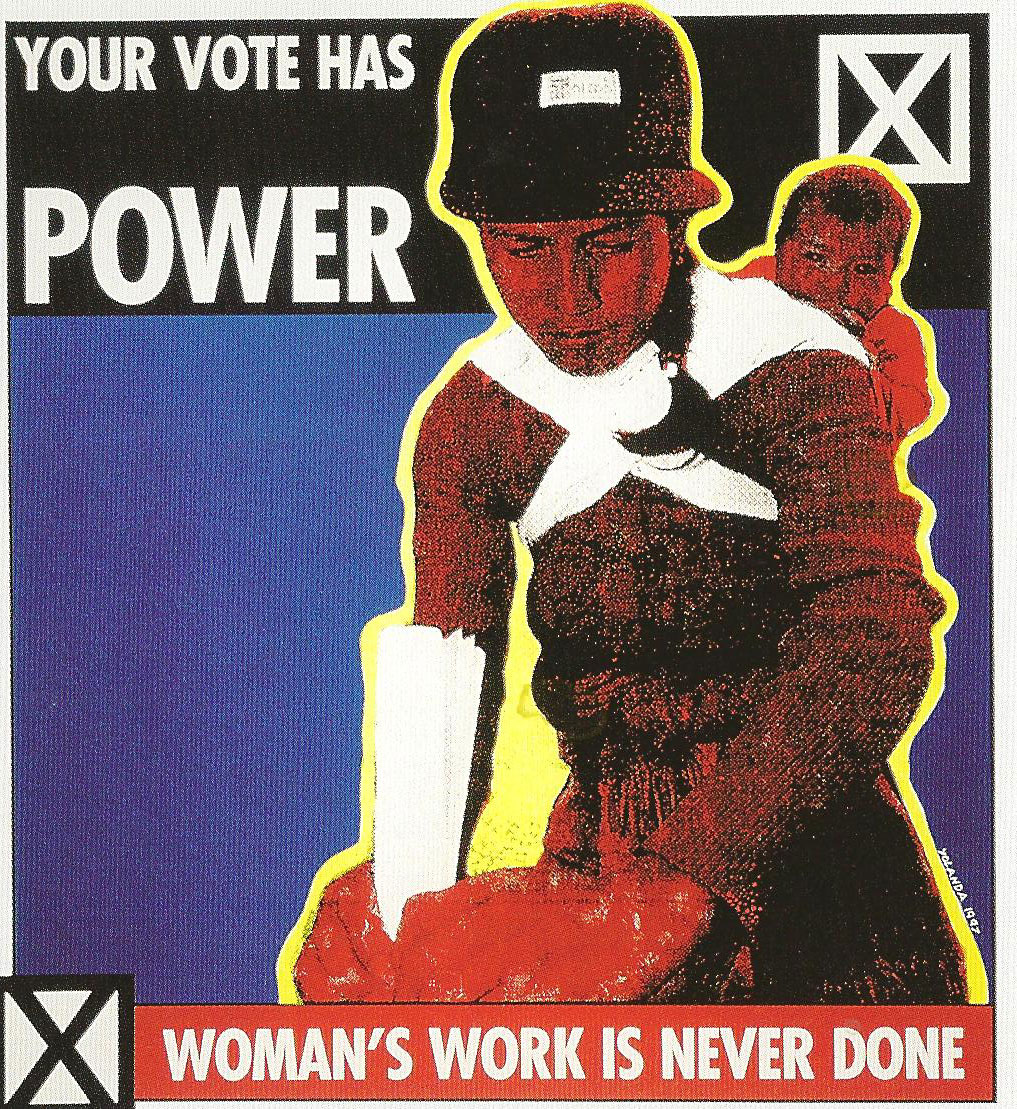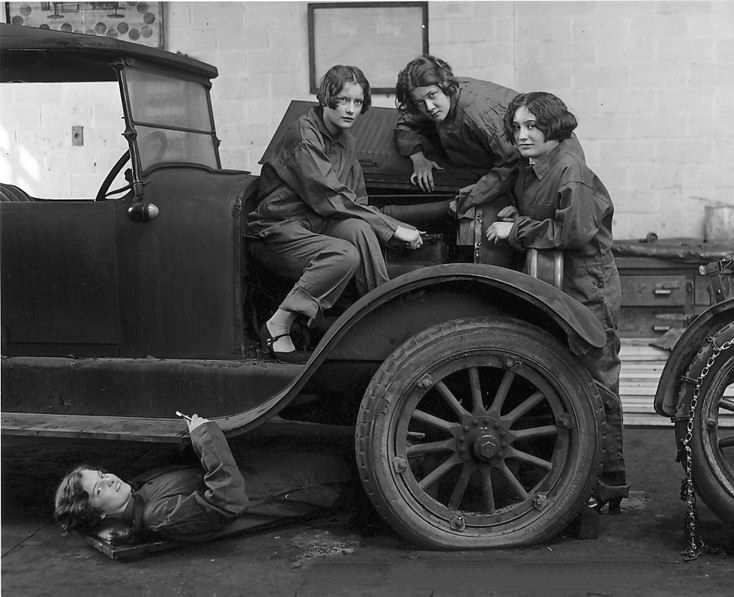 |
||||
|
Is the Women's Movement in Trouble?
By Roberta Lynch (Note: This article originally appeared in "Working Papers on Socialism & Feminism" published by the New American Movement (NAM) in 1976. NAM was a mixed gender organization heavily influenced by socialist feminism. A number of CWLUers were associated with it.) "Reports of my death are greatly exaggerated."- Mark Twain Well, I guess it's official. The cover story of the November Harper's magazine has broken the news: the women's movement is dead. In "Requiem for the Women's Movement," Veronica Geng argues that women in the movement are engaged in a host of meaningless activities to cover up their fear of confronting male power. She dissects the cultural feminists and the political feminists and even her own version of the socialist feminists until there don't seem to be any feminists left. This sense of disillusionment is becoming a common theme in the literature on the women's liberation movement. There must be something happening--or not happening--to bring it on. This past year most of the-published news of the women's movement has been bad: splits and spats within the major women's organization, NOW; dramatic defeats for the ERA in New York and New Jersey; a growing "women's anti-abortion movement"; short shrift compromises for women at the Democratic Convention. The women's press has also contributed to a sense of gloom and doom. Off Our Backs, the most consistent voice of the radical women's movement, has lately persisted in filling its pages with tirades over who has authorship rights to what documents; fights about women's health clinic ownership, and tired debates over whether men should be considered eternally hopeless. All in all, it's enough to make you think you can't do anything but get out your mourning garb.
But is that all? It's true, there is painful strife within the movement, and as a social force its power seems diminished. But those who dwell on these facts of the movement fail to note some more important facts of life. Movements do not simply get born, flourish, and die. They go forward and are beaten back. They retreat, regroup, and advance again. And movements do not exist in a vacuum of internal dynamics or the wishes and whims of their leaders. They are fixed in history as much as they help to make it. On thinking about it, the striking thing about the current crop of articles performing the last rites for the women's movement is their divorce from the social context in which the movement has had to eke out its existence for the past few years. The women's liberation movement emerged in the late 1960's--the product of a social movement that stressed equality and in a climate that promised jobs and income for all. As the 1970's dawned, the Nixon-Ford era was unfolding. The hallmark of this period has been political reaction coupled with economic recession--rising unemployment; the gutting of affirmative-action programs; the emergence of right-wing movements; massive social welfare cutbacks. In the face of this array of heavy artillery from corporate and governmental powers, nearly all progressive movements began to wither and to suffer the internal dissension that so often accompanies defeat. With all this, it's amazing that the women's movement managed to survive at all. But survive--in some forms--it did. Beyond the media spokespeople, some women continued to build. Around the country hundreds of small projects (health centers, rape counseling, etc.) are run by feminists or drew their initial inspiration from the women's movement. (The most recent example of this indirect influence is the rash of articles and activities that have sprung up to defend battered wives.) The Coalition of Labor Union Women, though top-heavy with trade union officials who have their own narrow agendas, continues to function and could yet be transformed into a meeting ground for the growing numbers of working women.
On another front, the National Congress of Neighborhood Women has been formed to bring together the thousands of women who have been in the heart of local community struggles. The movement has grown politically as well. Many in NOW have rejected the traditional interest group approach to politics and have taken as an informal slogan the motto: We don't just want a bigger piece of a rotten pie. And just a year and a half ago, nearly two thousand women came together from across the country in a conference to discuss the relationship of feminism and socialism and how to work for both. Despite these and other hopeful signs, there is no doubt that on the whole the women's movement today is weak, disorganized, and often disoriented. The blame for this situation cannot be laid entirely on external factors, either. Geng and the host of other critics are right in some respects. Mistakes--some of them quite serious--have been made in the women's movement over the past years. While different wings of the movement are guilty of different failures, there is a big picture that emerges in looking back. The movement refused to look at the differences among women, and so identified the needs of its own members as the needs of all women. It called for abortion without calling for an end to forced sterilization and enforced birth control. It called for women bank officers without calling for higher wages and better working conditions for bank office workers. It called for the ERA without calling for the extension, rather than the obliteration, of protective legislation.
And the movement itself was full of contradictions. It inveighed against leaders and so ended up with a self-appointed stock of them. It stressed lifestyle and so excluded those who weren't able to change their lives. It often saw itself in opposition to other social movements, and so ended up isolated. Yes, the women's movement is in trouble. But is it really dying? I doubt it. Some women in the movement are already working to overcome its weaknesses. But more basically, it seems to me that the women's movement will go on because expectations and consciousnesses have been raised too high--and we're still too far from even the most meager of our goals. Women total over 40 percent of the workforce, yet remained locked into certain low-paying positions. Women make up over 50 percent of our population, yet our major elected officials are over 90 percent male. (Only the barest gains were made for women in the recent election.)
|
|
|||
|
|
||||
|
And women are still held inferior in the eyes of the law, in the dictums of social custom, and in their most intimate relationships. We expected so much more that it's hard to believe we'll settle for this much less.
Some predict that the Carter presidency will help to revive the women's movement because it will open up new terrain for struggle. This may well happen. But the women's movement cannot simply be "born again" on a new wave in its old form. In order to survive and grow the movement desperately needs to change. It needs to develop a political approach that does not just serve to provide refuge or advancement for a few, but can fight for concrete changes in the day to day lives of the majority of women. And it needs to develop strong, ongoing organizational forms. The lack of such organizations has made strategizing difficult and pressure tactics weak. In the end, it is a question of power. Can a movement be built to involve and influence enough women so that it has the strength to challenge the corporate and governmental power that rules our lives. I don't know whether it can, given all the obstacles along the way. But I'd make a small bet on this: the movement for women's liberation--preferably in new forms and with new directions-will rise again. All plans for the funeral are premature. 
|
||||
 |
|
 |
||



